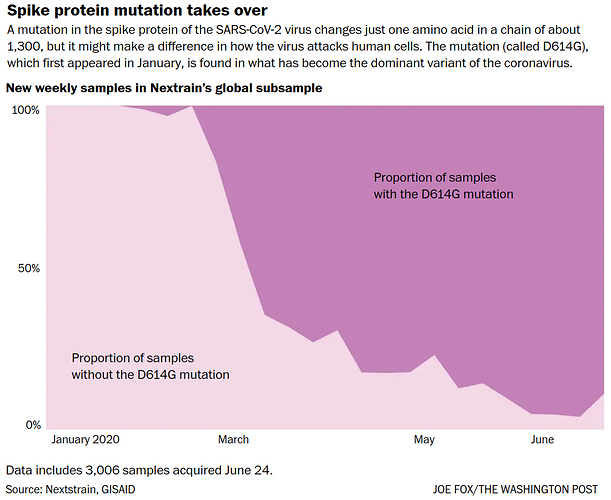(Seattle Times, June 30, 2020):
“Protests don’t appear to be driving coronavirus surge in Seattle area
or elsewhere, researchers say”
… some researchers say that the protests do not appear to be significantly driving this surge. This helps bolster the case that the coronavirus generally does not transmit as easily outdoors, where even a gentle breeze can help diffuse the virus, compared to confined indoor spaces. “I would say that outside makes a big difference because of much more air circulation,” said Dr. Jared Baeten, a vice dean at the University of Washington’s School of Public Health, who donned a mask and joined in the June 12 March of Silence through Seattle that drew an estimated 60,000 people.
In King County, the epicenter of Washington’s protests, health investigators have tracked - during a 19-day span in June - less than 5% of 1,008 total positive cases to people who attended protests. In other cities, including Minneapolis and Portland, researchers have yet to find that protests, where many were masked, have caused major spikes in cases. “The data may be imperfect but … neither here in King County, or elsewhere in the county, where health care authorities are looking, have we been able to document that or find strong evidence of that,” said Dr. Jeffrey Duchin, health officer of Public Health, Seattle & King County in remarks to reporters on Friday.
Others have reached a similar conclusion. A working paper - yet to be peer reviewed - from the National Bureau of Economic Research analyzed data from protests in 315 large cities and found “no evidence that urban protests reignited COVID-19 case growth during the more than three weeks following the protest.” The study also cited evidence that protests prompted more stay-at-home behavior by those who didn’t go to the protests.
.
(Washington Post, June 30, 2020):
“Protests probably didn’t lead to coronavirus spikes,
but it’s hard to know for sure”
… some public health officials and disease trackers say there appears to be scant evidence the protests sparked widespread outbreaks. Others say that because many states reopened about the same time as the protests, and because of the limits of contact tracing, they simply can’t say for sure. … most experts say the protests are probably not to blame, or almost certainly not the only thing to blame in places where cases are soaring. …
… Absent a few positive tests among protesters announced here and there, the only major outbreak tied to protests happened in South Carolina, where organizers postponed demonstrations or moved them online after at least 13 people who took part in previous protests tested positive. … data from other cities suggests protests have not been followed by an increase in cases of covid-19, the disease caused by the novel coronavirus. Minneapolis, where Floyd was killed and where the protests began, has registered a steady decrease in case numbers this month. … Health systems in the area that tested thousands of people who attended the demonstrations returned positivity rates of less than 1 percent. … Officials in New York and Philadelphia … say they see no evidence of cases accumulating because of the protests. … In Seattle; Portland, Ore.; and Oakland, Calif. - cities experiencing a coronavirus resurgence - officials have asked people testing positive whether they attended protests, and few said they had. …
… The same is true in Seattle. Out of more than 1,000 positive tests in recent weeks, 34 of the people testing positive said they attended a protest or mass gathering since late May, according to King County Health Officer Jeff Duchin. Nearly 3,000 people who said they were at protests have been tested by the city, and fewer than 1 percent were positive, Duchin said. … In other places, the impact of the protests is less clear. Brent Andrew, spokesman for San Francisco’s Department of Public Health, said the city is still monitoring potential ties between a recent surge in cases and protests. In Houston, at the epicenter of a covid-19 crisis in Texas, officials attribute rising case loads to a variety of factors - and say protests could be one. …
… available data suggests the protests did not ignite the same kind of outbreaks associated with some conferences, choir practices and religious services. Many epidemiologists and virologists suggest being outside allows coronavirus-infected particles to disperse more easily, making outdoor gatherings - such as protests - less dangerous than those inside.







